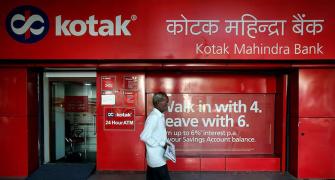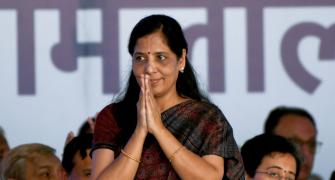Current methods of intellectual property exchange are inefficient and often hinder companies from easily realizing value from existing IP assets. In addition, intellectual property enforcement is costly and uncertain and entails lengthy negotiations or legal actions.
As a result, necessary IP rights are not effectively transferred, the 'best price' for IP is rarely achieved, and the process itself inhibits the market adoption of new technology based products and hence their companies' economic growth.
What is Intellectual Capital?
Intellectual capital is a term with various definitions in different theories of economics. Accordingly its only truly neutral definition is as a debate over economic "intangibles". Ambiguous combinations of instructional capital and individual capital employed in productive enterprise are usually what is meant by the term, when it is used to actually refer to a capital asset whose yield is intellectual rights.Such use is rare, however, and the term rarely or never appears in accounting proper - it refers to a debate, and to the assumed capital base that creates intellectual property, rather than an auditable style of capital.
Perhaps due to their industry focus, the term "intellectual capital" is employed mostly by theorists in information technology, innovation research, technology transfer and other fields concerned primarily with technology, standards, and venture capital.
It was particularly prevalent in 1995-2000 as theories proliferated to explain the "dotcom boom" and high valuations. During this period it was often observed that computer code and programmers were bearing a substantial premium when combined in new unproven companies.
It is hard to see how this differs from the tulip boom, however, when it would have been just as likely to assign a high value to the seemingly-magical combinations of tulip bulbs and, say, the pots they grew in.Brand as an AssetWhether flags, brands, labels or simple fear dominate economic decisions, it seems that the underlying theories of intellectual capital and of human capital don't explain them.
When attached to "capital" as prefixes, the terms "intellectual", "knowledge" and "human" often conceal more than their use can reveal. Thus the terms intellectual capital, knowledge capital and human capital more properly describe debates, not assets, as internally generated assets do not appear on a balance sheet, however International Financial Reporting Standard 3 on Business Combinations requires acquired intangible assets to be accounted for during the purchase price allocation exercise.
They produce neat abstractions but so far poorly explain what actually occurs in the biologically real world: individuals buying in a social setting based on instructions.So far, the more specific terms "individual", "instructional" and "social" from human development theory, have been preferred in Wikipedia as adjectives describing classes of capital. In part this is because these terms have definitions that arise from academic categories and practices rather than faddish marketing or management theories.
There are standards for assigning value to these, e.g. the UN Human Development Index which literally ranks flags (of countries) for quality of life.Extending such standards to labels (via mandatory labelling) and applying them positively in brand management, e.g. positioning a brand for appeal to an ethical minority, is increasingly common.
Projects by Consumerium and AdBusters seek to make comprehensive outcomes more important in buying decisions. This in turn is part of a trend towards more moral purchasing.When viewed as an asset, then, a brand is simple social capital that may have an increasing amount of instructional capital attached to satisfy an ever-rising demand for more information about product
Why should any asset be intangeible ?
Intangible assets are defined as those non-monetary assets that cannot be seen, touched or physically measured and which are created through time and/or effort.
There are two primary forms of intangibles - legal intangibles (such as trade secrets (e.g., customer lists), copyrights, patents, trademarks, and goodwill) and competitive intangibles (such as knowledge activities (know-how,knowledge), collaboration activities, leverage activities, and structural activities.
Legal intangibles generate legal property rights defensible in a court of law. Competitive intangibles, whilst legally non-ownable, directly impact effectiveness, productivity, wastage, and opportunity costs within an organization - and therefore costs, revenues, customer service, satisfaction, market value, and share price.
Human capital is the primary source of competitive intangibles for organizations today. Competitive intangibles are the source from which competitive advantage flows, or is destroyed.
The development of new IP exchange practices ultimately may lead to the creation of an operating Intellectual Property Rights Exchange in the future, providing for the efficient open market trading of various direct(spot/cash) and derivative IP-based license, debt equity and hybrid investments.
Such an exchange could bring together IP owners, consumers and investors with a solution for current market inefficiency and provide companies with a mechanism for funding additional innovation, reducing their exposure to legal actions, and increasing their access to underutilized patents and technologies. The objective that as a result, faster commercialization of technology will accelerate long-term economic growth.
Different types of trading activities may be developed, bound by the common principles of consistent transaction termsand market pricing. Transactions might be for license rights (e.g., for a specific quantity of production), for ownership rights (e.g., via an open auction), or for various kinds of derivative rights based on specific conditions affecting the underlying asset value.
The derivatives exchange will direct the manner in which the intellectual property rights, either owned by these companies or acquired on their behalf, will be transferred to third parties in accordance with the owners' objectives. This will relieve the company of the burden of establishing andadministering a licensing program to maximize the value of their IP and will provide investors in IP an avenue for marketing those rights instead of engaging in inefficient, costly and unfamiliar licensing negotiations.
Where all could the applications be?
1. Under the most recent context global sporting events like the current (2007) world cup, an exchange for derivatives comprising of notional cash value of say runs scored by a batsman, a basket of such values could be securitized and be traded on an exchange, in lay man terms an Exchange which will have an instrument SachinAPRIL 30, i.e a derivatives instrument whose pay off would be linked to the runs scored by sachin as of April 30 or AUSTRALIAWC07APRIL30 this market could then attract participants like advertisers,media channels,branders,consumers investors and speculators.
2. Film and Movie Industry: an active and liquid market comprising of actors, technicians, financiers, producers, investors, distrubutors, advertisers media channels and end consumners (the guy who pays money and buys ticket/dvds)
3. Software and Products company.
4. Architectural firms, building, construction and realt companies, REITS. Eg RELIANCESEZNEAR MUMBAI 2011 futures.
5. Art and artwork.
Srinivasan Venkataraghavan is Chief Executive Officer, Altos Advisory Services







